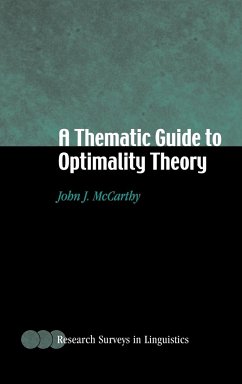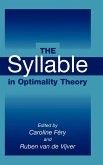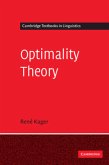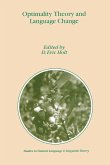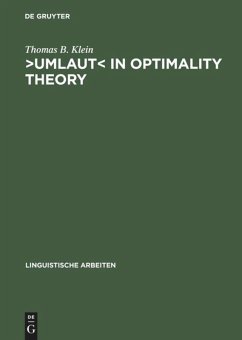This book describes Optimality Theory from the top down, explaining and exploring the central premises of OT and the results of their praxis. Examples are drawn from phonology, morphology, and syntax, but the emphasis throughout is on the theory rather than the examples, on understanding what is special about OT and on equipping readers to apply it, extend it, and critique it in their own areas of interest. To enhance the book's usefulness for researchers in allied disciplines, the topdown view of OT extends to work on first- and second-language acquisition, phonetics and functional phonology, computational linguistics, historical linguistics, and sociolinguistics. Furthermore, to situate OT for those coming from other traditions, this book also contains much discussion of OT's intellectual origins, its predecessors, and its contemporary competitors. Each chapter concludes with extensive suggestions for further reading, classified by topics, and supplemented by a massive bibliography (over 800 items). The book ends with a list of frequently asked questions about Optimality Theory, with brief answers and pointers to a fuller treatment in the text.
Table of contents:
Introduction: an overview of optimality theory; Part I. Core: 1. Basic architecture; 2. Constraint typology; 3. Modes of interaction; 4. Illustration; Part II. Context: 5. Classic generative phonology; 6. Conspiracies; 7. Representations and constraints on representations; 8. Other constraint theories (TCRS, DP, etc.); Part III. Results: 9. Endogenous constraints; 10. Consequences of markedness/faithfulness interaction; 11. Consequences of constraint violability; 12. Consequences of parallelism; Part IV. Connections: 13. Learnability and acquisition; 14. Parsing; Morphology and the lexicon; 15. Syntax and semantics; 16. Language variation and change; Part V. Issues and prospects: 17. Functionalism; 18. Opacity; 19. Serial OT; 20. Local conjunction; 21. 'Overkill'; 22. Other topics.
This book describes Optimality Theory from the top down, explaining and exploring the central premises of OT and the results of their praxis. The emphasis throughout is on understanding what is special about OT and on equipping readers to apply it in their own areas of interest.
Explains and explores the central premises of OT and the results of their praxis.
Table of contents:
Introduction: an overview of optimality theory; Part I. Core: 1. Basic architecture; 2. Constraint typology; 3. Modes of interaction; 4. Illustration; Part II. Context: 5. Classic generative phonology; 6. Conspiracies; 7. Representations and constraints on representations; 8. Other constraint theories (TCRS, DP, etc.); Part III. Results: 9. Endogenous constraints; 10. Consequences of markedness/faithfulness interaction; 11. Consequences of constraint violability; 12. Consequences of parallelism; Part IV. Connections: 13. Learnability and acquisition; 14. Parsing; Morphology and the lexicon; 15. Syntax and semantics; 16. Language variation and change; Part V. Issues and prospects: 17. Functionalism; 18. Opacity; 19. Serial OT; 20. Local conjunction; 21. 'Overkill'; 22. Other topics.
This book describes Optimality Theory from the top down, explaining and exploring the central premises of OT and the results of their praxis. The emphasis throughout is on understanding what is special about OT and on equipping readers to apply it in their own areas of interest.
Explains and explores the central premises of OT and the results of their praxis.

